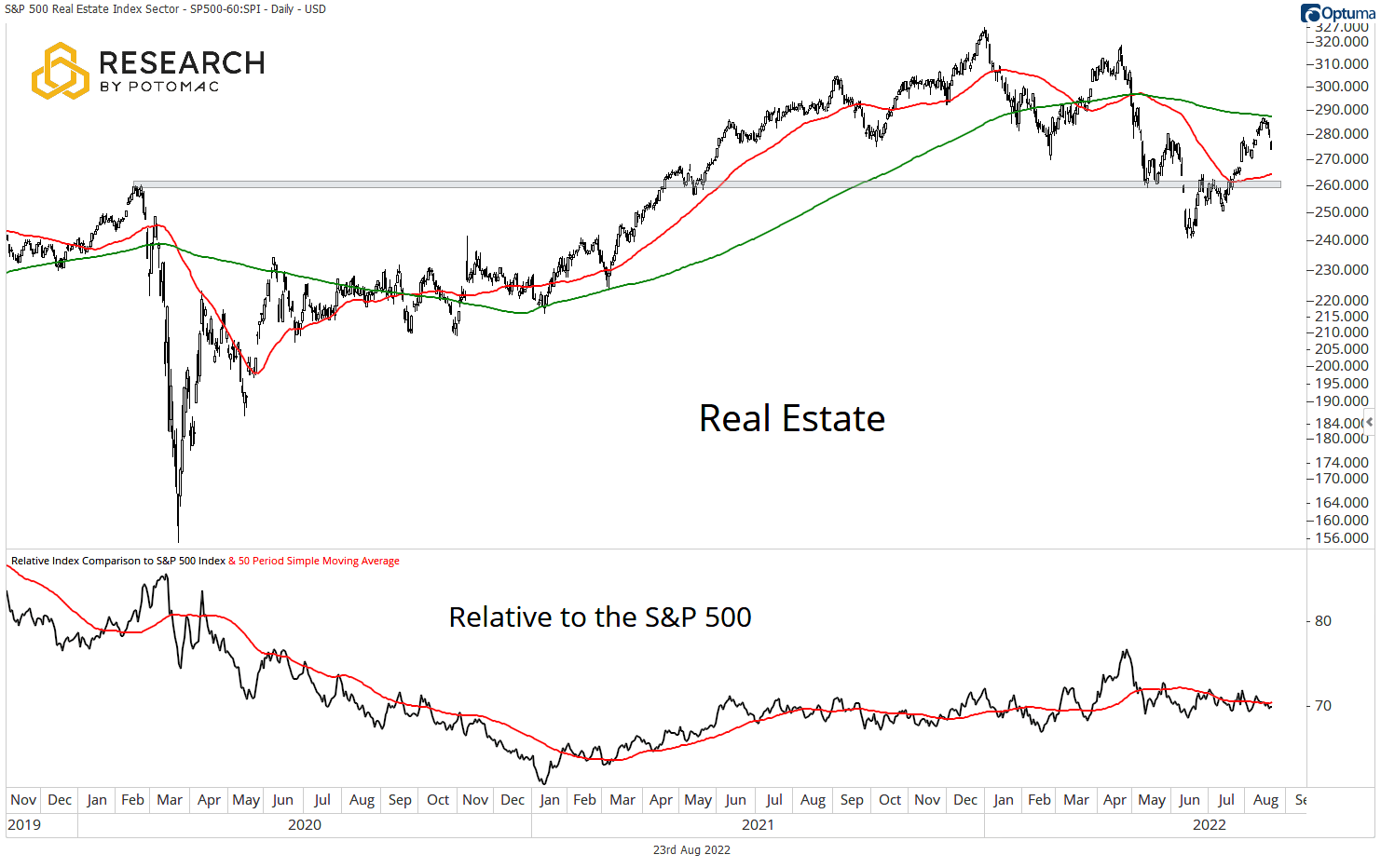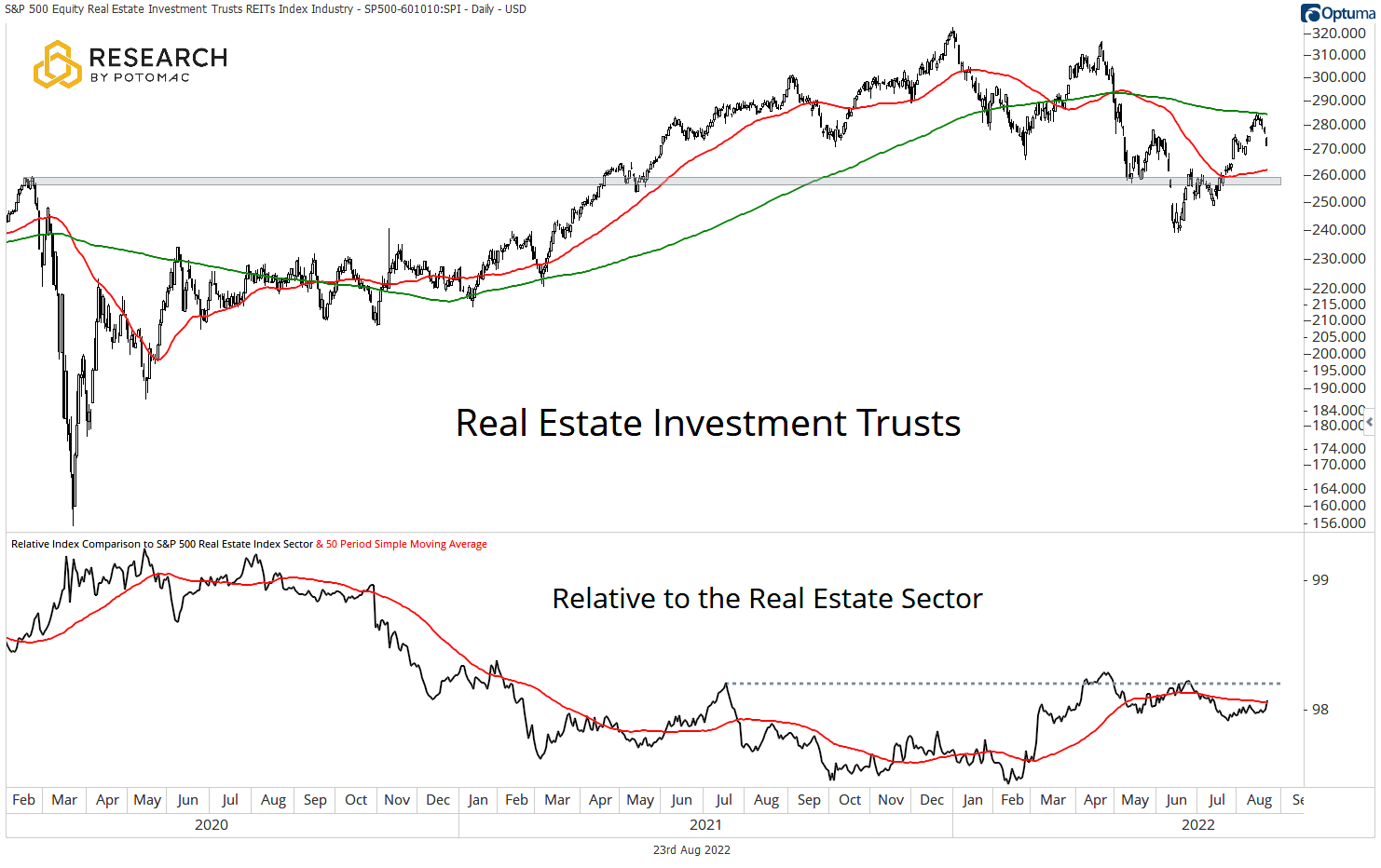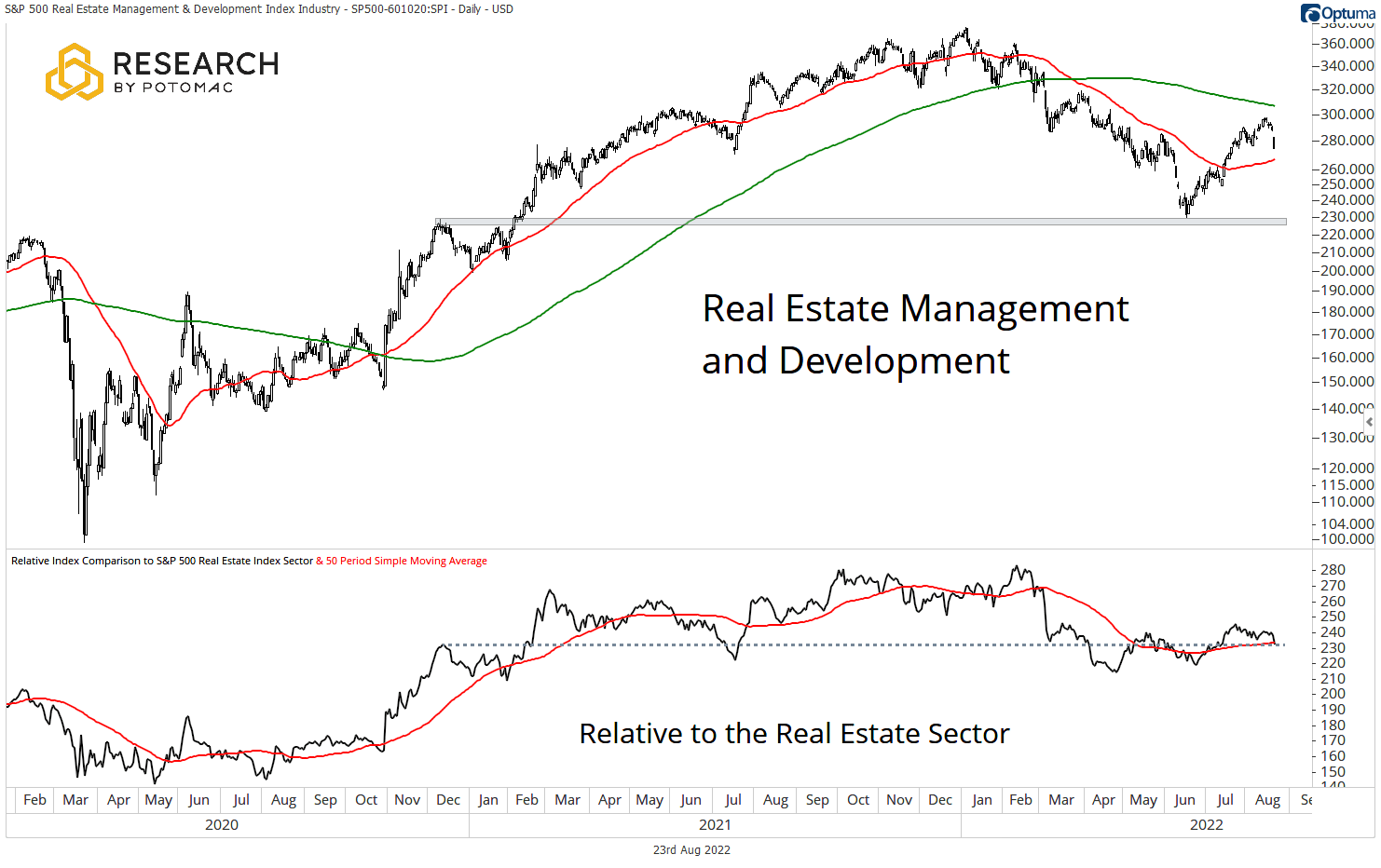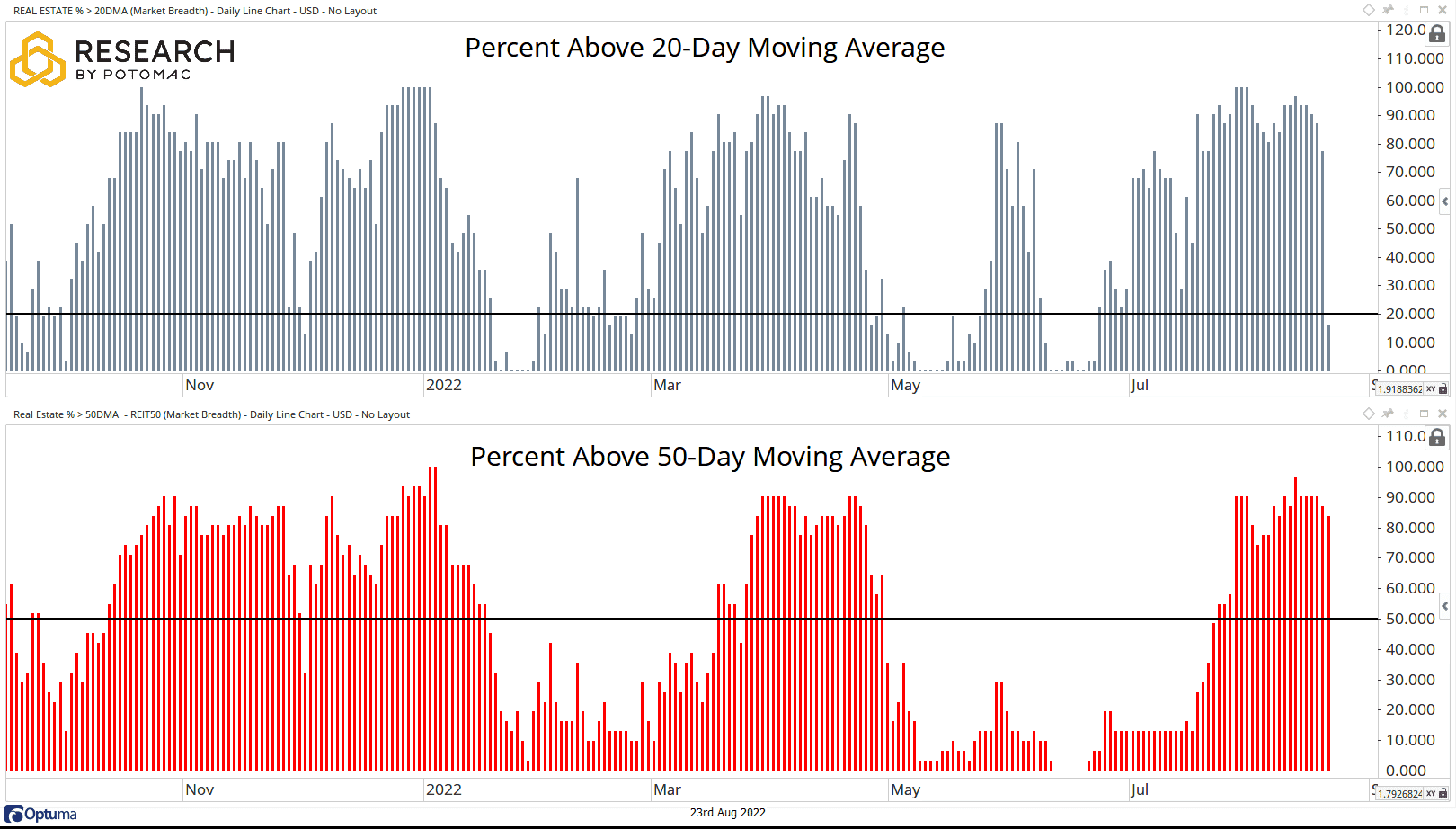
Exposure to the Real Estate sector has not hurt investors much this year. However, it has not provided much help either. Trends across the space are neutral on an absolute and relative basis, awaiting a clear directional break. Breadth in the space has become washed out on a short-term basis, while the majority of sector components are above their 50-day moving average and could provide the fuel for another attack on the 200-day moving average from below.
Real Estate
While Real Estate did participate in the rally from the June lows, it has recently begun to reverse course after being rejected at the declining 200-day moving average. The 50-day moving average, just above the pre-COVID highs, is a key line in the sand for bulls to defend. Between the two moving averages, the price trend is neutral, awaiting a clear break in either direction.
Relative to the S&P 500
On a relative basis, this traditionally defensive sector has not helped much this year. It also has not hurt much. The trend is neutral, oscillating around the 50-day moving average.

Industry Trends
Real Estate Investment Trusts have been turned away at the declining 200-day moving average after rallying from the June lows. The rising 50-day moving average is just above the pre-COVID highs and is a likely support level should current weakness persist.
Relative to the broader sector, the group has not been able to make much upside progress as it remains below important resistance and tests a flat 50-day moving average.

Real Estate Management and Development also find itself trapped between the 50 and 200-day moving averages after making a strong move from the June lows. It is hard to make a strong bullish or bearish case at current levels as the group trades in a neutral trend.
Relative to the Real Estate sector, Management and Development stocks are stuck in a sideways trend, moving above and below the 50-day moving average and a key price level.

Breadth
As the sector has pared back recent gains, the percentage of Real Estate components trading above their 20-day moving average crossed below the 20% mark in the August 21st trading session. However, most sector components are above their 50-day moving average, a measure of intermediate term trend. There were 51 instances since 1998 where the percentage of Real Estate components trading above their 20-day moving average crossed below the 20% mark, while the percentage of components trading above their 50-day moving average was in the majority for a median gain in the Real Estate sector of 4.76% with a 65.22%-win rate over the following quarter. It’s worth noting that median gains have tended to peak 50 trading days out at 5.16% on a reduced 60.87%-win rate, so consideration should be given to hold times.

This note is a preview of our Sector Deep Dive.
Disclosure: This information is prepared for general information only and should not be considered as individual investment advice nor as a solicitation to buy or offer to sell any securities. This material does not constitute any representation as to the suitability or appropriateness of any investment advisory program or security. Please visit our FULL DISCLOSURE page.
